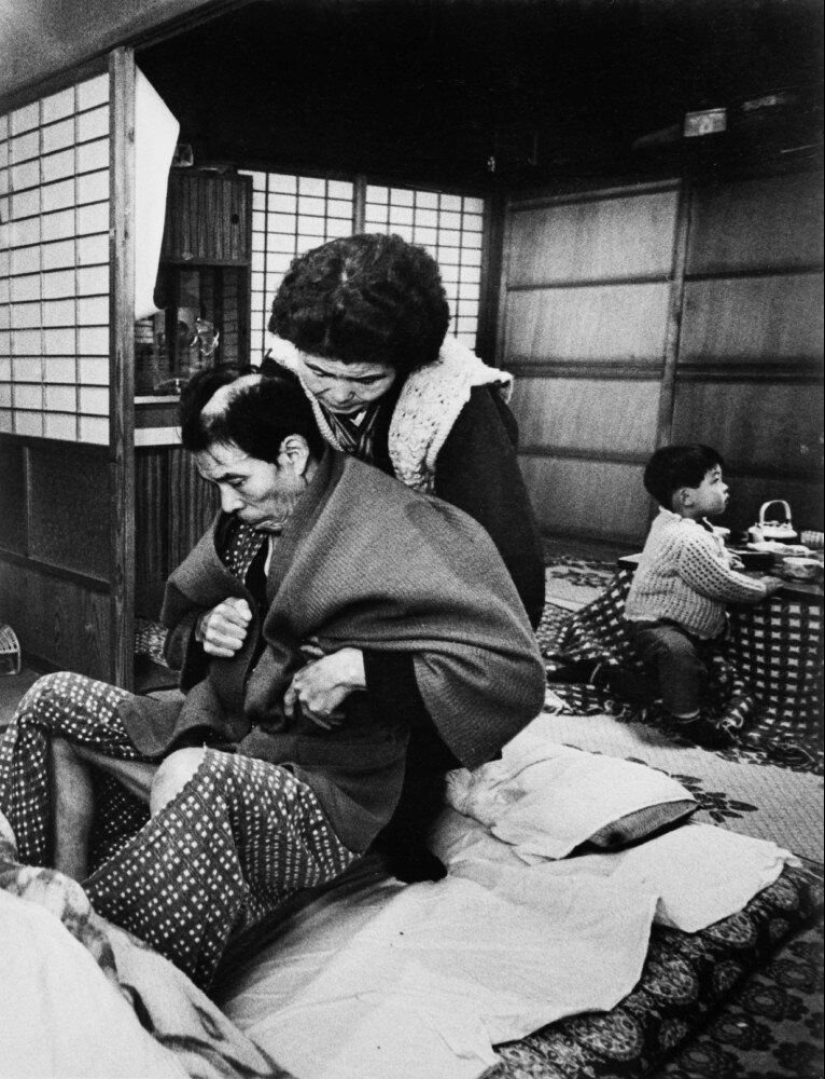Tomoko Uemura in the bath. Photo that shocked the whole world
Categories: Asia | History | People | Photo project | Society | Tragedy | World
By Vika https://pictolic.com/article/tomoko-uemura-in-the-bath-photo-that-shocked-the-whole-world.htmlEvery day of human life is a struggle. The struggle for immunity with external threat factors. Many of us know such diseases as influenza, tonsillitis, cancer, and AIDS. Some people know what "radiation sickness" is. But far fewer people are familiar with Minamata disease.
Minamata is a Japanese town with a bay of the same name, into which the industrial company Chisso dumped mercury waste for more than 34 years, which became the most famous.
10 PHOTOS

1. Mercury practically did not remain directly in the water, it accumulated in the organisms that were in it and consumed. Fish and oysters, the staple food of the locals, have been a catalyst for public health problems.
Methylmercury from water and seafood gradually affected the central nervous system of the population in varying degrees, from hearing loss, weakness, and numbness to loss of reason and death. Not only people suffered and died, but also birds, fish, and domestic animals. Due to the consumption of fish by pregnant women, children began to appear with congenital Minamata disease.
Local doctors began trying to get the public's attention. But most successfully, this was done by the American documentary photographer Eugene Smith.

2. In the photo - Photographer Eugene with his wife Eileen Smith.
For 3 years he lived and photographed the disease in the faces of the inhabitants of the city.

3.

4.

5.

6.

7.
But Eugene himself believed that only one photograph was needed that hit right on target. This is how the best work of Eugene appeared: "Tomoko Uemura in her bathroom." The black-and-white photo shows a mother hugging her badly disfigured, naked daughter in a traditional Japanese bathroom.

8. Tomoko Uemura in her bathroom
Immediately after its publication, the photo became widely known and drew the attention of the world community to Minamata disease, contributing to the struggle of the victims for compensation. Unfortunately, this photo, although it gained wide popularity, could not bring much benefit. The photographer was beaten up by thugs hired by the Chisso company, and the Uemura family was criticized and accused by locals and factory workers, who considered their story a lie and a way to obtain financial gain.
According to the family, their life became simply unbearable, and the photo of their daughter was dragged through all the publications, perverting the meaning with which it was created. Five years after this photograph, Tomoko Uemura died.

9. After Eugene Smith's death, his wife transferred all copyright to the photograph to the Uemura family. Tomoko's father, Yoshio Uemura, refused all interviews and did not want Tomoko's image to be further exploited, and Tomoko herself found peace.

10. A scene from the movie "Minamata"\"Great". Dedicated to the Minamata problem.
Despite the positive decision of the Japanese court that the company must pay damages to the victims, Chisso did not do this.
In 2013, Japan's prime minister declared that the country had fully recovered from mercury pollution, denying that there were victims alive today. No cure for Minamata disease has yet been found.
Keywords: Tomoko Uemura | Bath | External threat factors | Immunity | Illness | Health problems | People | Japan | Minamata disease | Human life
Post News ArticleRecent articles

In November 69 BC, she was born Cleopatra, the last Queen of Egypt from the Macedonian dynasty of the Ptolemies. Cleopatra, perhaps ...

Explosions of smartphone batteries and short circuits in sockets no longer become a sensation, but few people know that the danger ...
Related articles

American artist Lee Price is sure that eating is a completely natural process, but many are ashamed of their attitude to food, ...

It is known that the Germans — one of the most notorious Nations. Stories about the joint baths for men and women, Nude ...

Even from school history lessons, we remember that in the Middle Ages, European cities were real cesspools. Sewage flowed through ...

It is believed that the appearance of gray hair — it is a sign of aging, the gradual extinction of the organism. Many ...